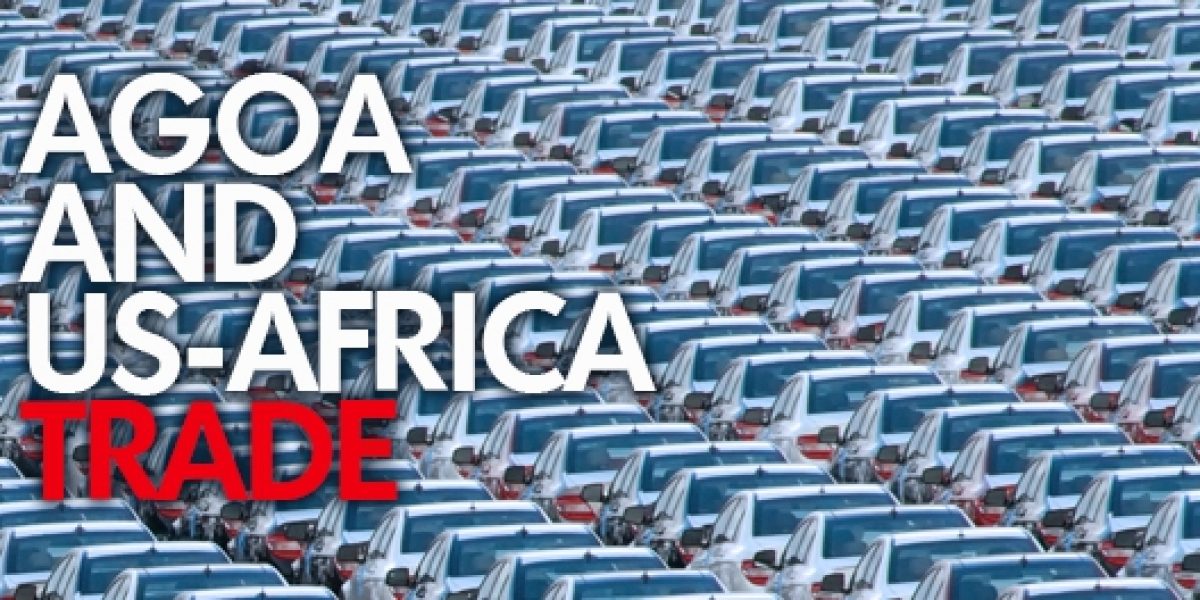What is AGOA?
The African Growth and Opportunity Act is a US-Africa trade deal that has been in effect since 2001. It grants duty free access to the US market for qualifying African states, without requiring any market opening in return. AGOA expires on the 30th of September 2015, and its renewal is currently being debated before the US Congress.
Which countries qualify for AGOA?
The 43 countries of sub-Saharan Africa are eligible for AGOA preferences, provided they meet certain conditions. These conditions include a commitment to the rule of law, a market-based economy, and internationally recognised workers rights, as well as a pledge to work towards eliminating barriers to trade and investment with the United States. Four countries have failed to meet these conditions and have lost AGOA preferences – the DRC, Guinea-Bissau, Mali, and Swaziland.
Does South Africa benefit from AGOA?
Yes. South Africa is eligible for AGOA market access, which is estimated to contribute 62,395 jobs to the South African economy.
How comprehensive is AGOA?
The United States categorises their imports into 10,500 tariff lines. 3800 of these lines have no tariffs for all countries, 3400 have no tariffs for developing countries, and an additional 1800 have no tariffs under AGOA. A non-LDC AGOA-eligible country like South Africa would thus qualify for duty-free access into the US market on 9000 tariff lines.
Has AGOA increased trade with the United States?
Exports from the AGOA group to the United States have increased 78% since 2001, and imports into AGOA countries from the US have increased 239% over the same period. It is unclear what portion of this growth is driven by AGOA, as high African growth rates and the export of commodities and energy products have also had a large impact. AGOA runs a significant trade surplus with the United States.
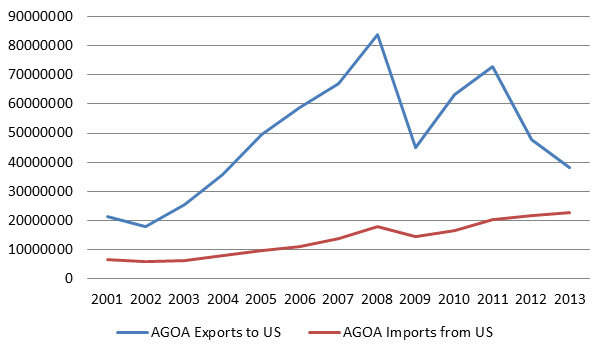 Source: All data used in the graphs in this article has been sourced from trademap.org
Source: All data used in the graphs in this article has been sourced from trademap.orgAGOA’s exports to the United States initially grew faster than exports from the rest of the world, however they have recovered more slowly after the global financial crisis of 2008.
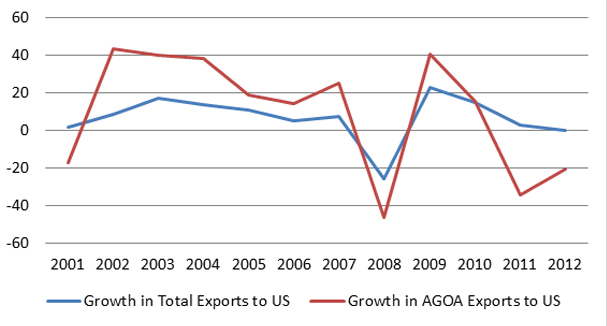
Which AGOA countries export most to the United States?
The three largest AGOA exporters are Nigeria, Angola and South Africa – however Nigeria and Angola primarily export oil. If energy exports are removed, South Africa is by far the largest export partner for the US, followed by Kenya, Lesotho and Mauritius.
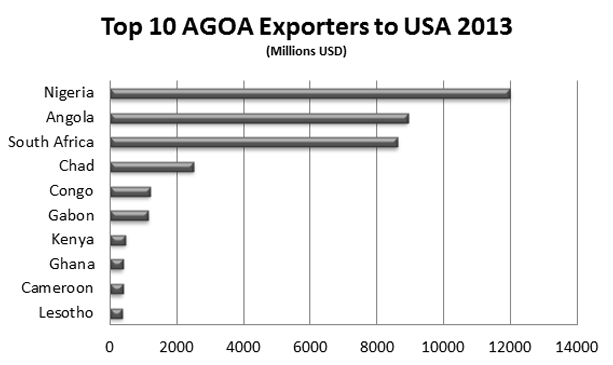
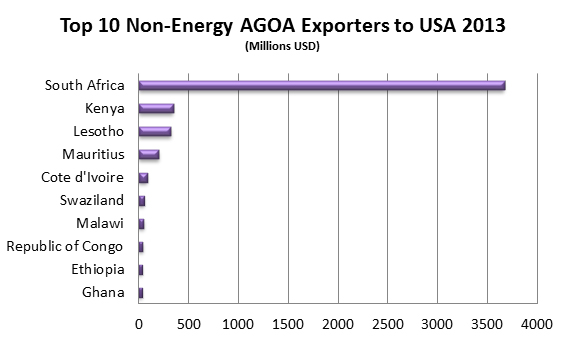
While overall trade is high, the distribution of trade amongst AGOA countries is unequal. Half of AGOA-eligible countries export less than $1 million to the United States.
What do AGOA countries sell to the United States?
AGOA’s exports to the United States are dominated by energy and commodities. Mineral fuels, oils, and distillation products make up 68% of US imports from AGOA, and this figure rises to 88% if South Africa’s exports are removed. Some manufactured goods – particular clothing and others textiles – have been growing fast, but remain small compared to commodity exports.
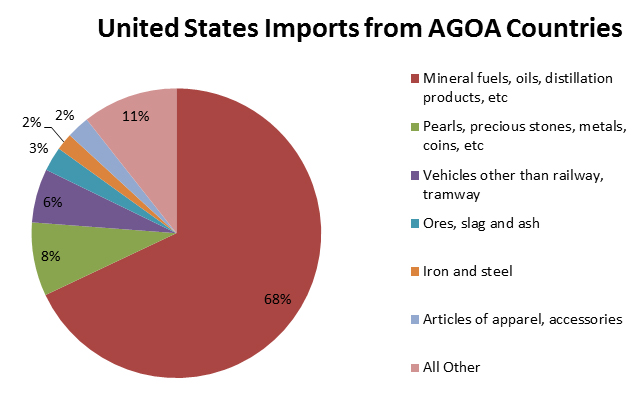
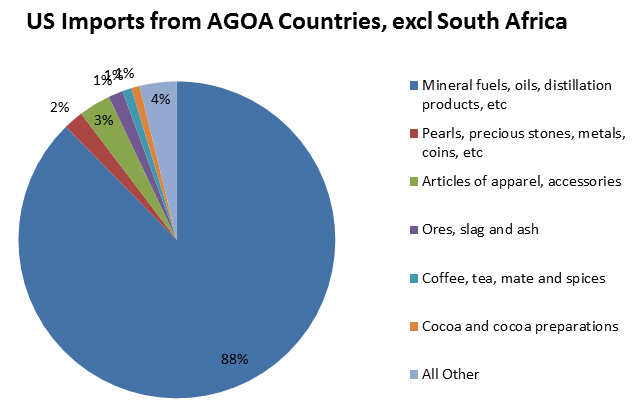
South Africa’s trade with the US does not follow this pattern, and include the export of a large quantity of high-end manufactured goods, particularly vehicles and their component parts.
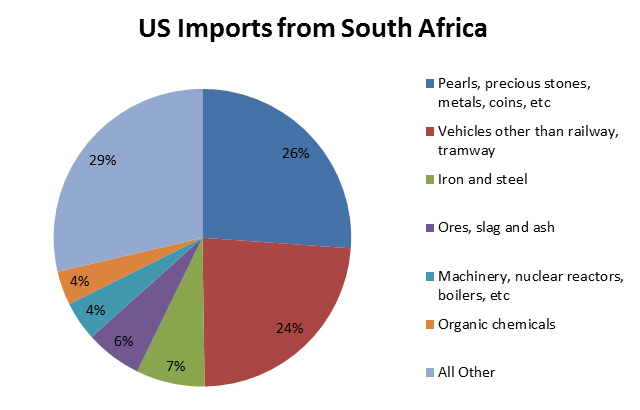
How does the AGOA group’s trade with the US compare to other partners?
During AGOA’s lifetime, the United States has been overtaken by China as a destination for exports from AGOA countries, and has fallen further behind the European Union in the aftermath of the financial crisis.
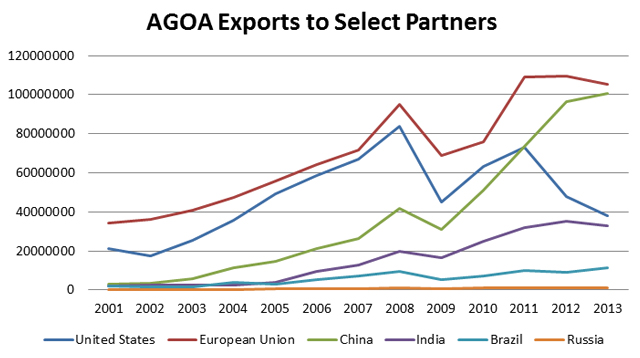
How can I find more information?
SAIIA has the following experts available from the Economic Diplomacy Programme for comment on AGOA:
- Catherine Grant-Makokera Programme Head
- Christopher Wood, Researcher
- Michael Carr, Researcher Scholar
To arrange for interviews contact the media department on media@saiia.org.za.

